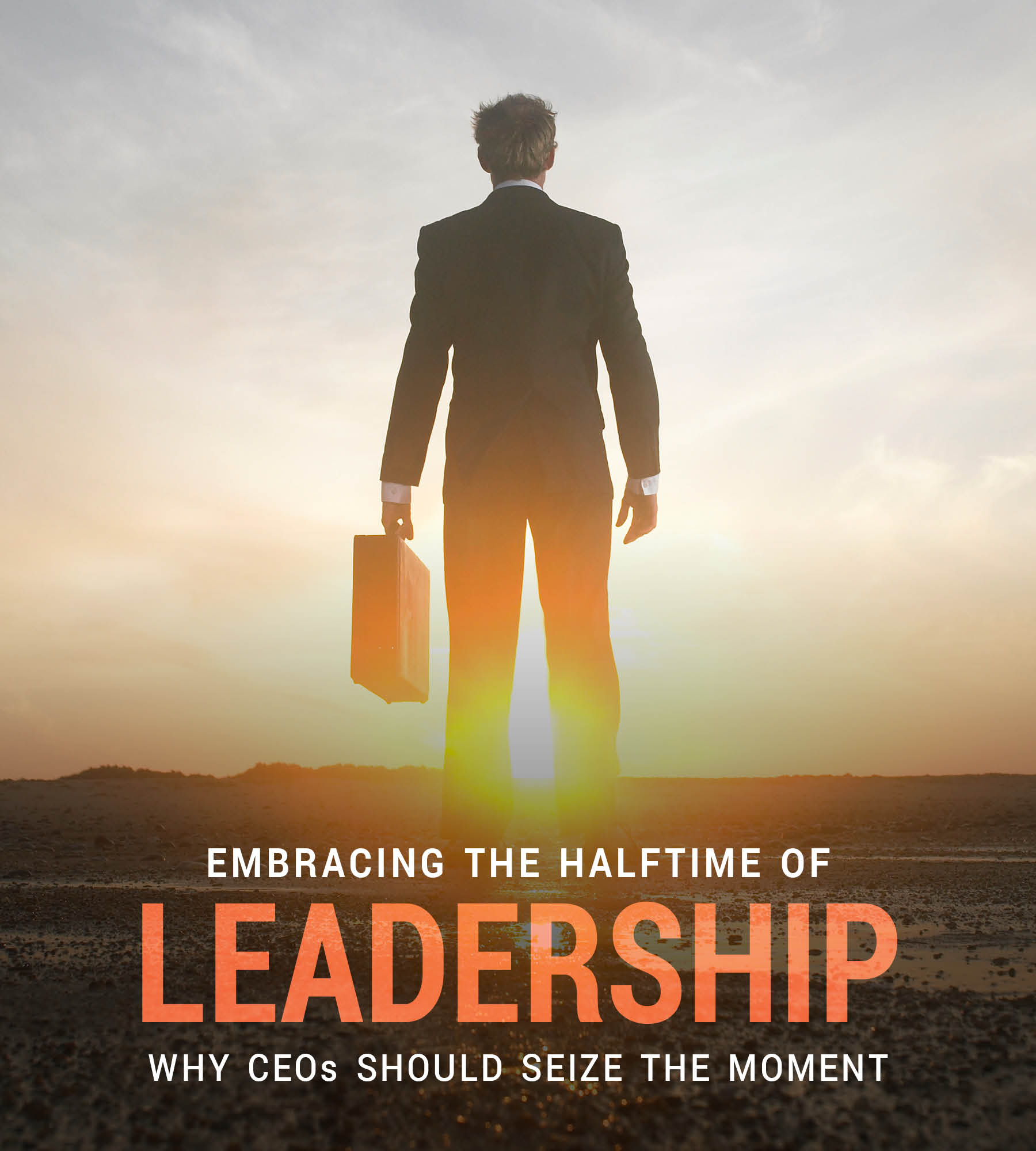Language
You can read the magazine in one of the following languages
For many CEOs, the first half of their careers is driven by ambition – climbing the ladder, achieving financial success and making their mark on the business world.
But there often comes a time when the satisfaction of these achievements starts to wane. This is where ‘halftime’ enters – a pivotal phase that provides leaders with the opportunity to shift from success-driven goals to purpose-driven impact.
Recognizing and embracing halftime is essential for any leader looking to create a legacy that extends beyond the boardroom.
Halftime is not about age, but about the inner realization that something needs to change.
CEOs who reach halftime often experience a growing sense of dissatisfaction. Even after achieving their career goals, something feels missing. Perhaps business victories no longer provide the thrill they once did, or there’s a persistent desire to contribute to something greater than profit margins.
Some common signs that you’ve reached halftime include:
● Emptiness after success: The joy of reaching financial milestones or business accolades feels fleeting.
● Desire for deeper impact: A yearning for a broader legacy emerges, one that goes beyond business and into areas such as community, social causes or mentorship.
● Reassessing personal priorities: Family, personal growth and a longing to give back start taking precedence over business concerns.
Halftime, popularized by Bob Buford in his book Halftime: Moving from Success to Significance, is not a moment of crisis but of opportunity. It’s a time to reflect on how to use the success, skills and influence amassed in the first half to create lasting impact.
As Chair of the Halftime Institute in Australia, I’ve learned that these three essential steps will help you make the most of your halftime.

1. Reflection: Look back to move forward
The first step in embracing halftime is intentional reflection. Set aside time to assess your personal and professional journey. What have you accomplished and what have you missed? What sacrifices were made along the way? This reflection helps identify the values, people and causes that will drive your second half. Many leaders find it helpful to go on a retreat or engage with a mentor to facilitate this process.

2. Reimagine your future: Shift from success to significance
The next phase is reimagining your goals. At halftime, it’s no longer about maximizing personal success; it’s about contributing to the success of others. Ask yourself, ‘How can I make a meaningful difference?’ This might mean mentoring future leaders, investing in social causes or transitioning into philanthropic work. Reframing your goals from business metrics to impact metrics allows for a more purposeful second half.

3. Realign your resources: Time, talent and treasure
Once you’ve defined your new purpose, it’s time to realign your life to reflect these values. This might involve scaling back your role as a CEO, launching a foundation or dedicating more time to personal growth or family. Whatever your path, ensure that your time, talent and resources are being directed toward what matters most to you. This stage often requires tough decisions about where you allocate your energy, but the payoff is living a life of significance.
It’s easy to confuse halftime with a midlife crisis, but the two are vastly different. A midlife crisis is often reactionary – triggered by a fear of aging and characterized by impulsive decisions like buying luxury cars or making drastic life changes. In contrast, halftime is a deliberate, thoughtful process that focuses on creating a lasting, positive impact. It’s not about escaping the past but rather building on it to create a meaningful future.
Halftime requires courage, as it forces leaders to confront difficult questions and make changes that may not align with their earlier pursuits. But for those willing to take the leap, halftime offers a chance for a renewed sense of purpose and fulfillment.
Leadership is more than just running a profitable company; it’s about inspiring others and leaving a lasting impact. CEOs who embrace halftime don’t just enrich their own lives – they elevate their organizations and communities. By focusing on significance over success, they become better leaders, mentors and human beings.

Halftime is your chance to turn your success into significance and ensure that your legacy is not just one of financial accomplishment but of meaningful change.
Moreover, halftime allows leaders to pivot their influence toward causes that matter. Whether it’s in the form of philanthropy, investing in future leaders or focusing on social impact, halftime turns wealth and power into tools for good.
For example, my own halftime experience, after years of building successful health businesses (including the Back In Motion Health Group – Australia’s largest physiotherapy brand at the time), has led me to prioritize mentorship and charitable initiatives. Through the Iceberg Leadership Institute, I now guide others in navigating their halftime moments, helping them transition from the pursuit of success to significance.
Halftime is a gift, offering a chance to reflect, realign and refocus. It’s an opportunity for CEOs to move beyond the chase for success and start building a legacy of significance. For those who recognize its call, halftime can transform the second half of life into a journey of purpose, fulfillment and lasting impact.
If you’re feeling the pull toward something greater, don’t ignore it. Halftime is your chance to turn your success into significance and ensure that your legacy is not just one of financial accomplishment but of meaningful change.

Jason T Smith
Contributor Collective Member
Jason T Smith is an accomplished entrepreneur, having built and sold five businesses, including the Back In Motion Health Group. Jason is also the author of three books, with his memoir ‘Unlikely’ being his latest. He’s a sought-after keynote speaker and Founder of the Iceberg Leadership Institute. For more information visit https://jasontsmith.com.au/
